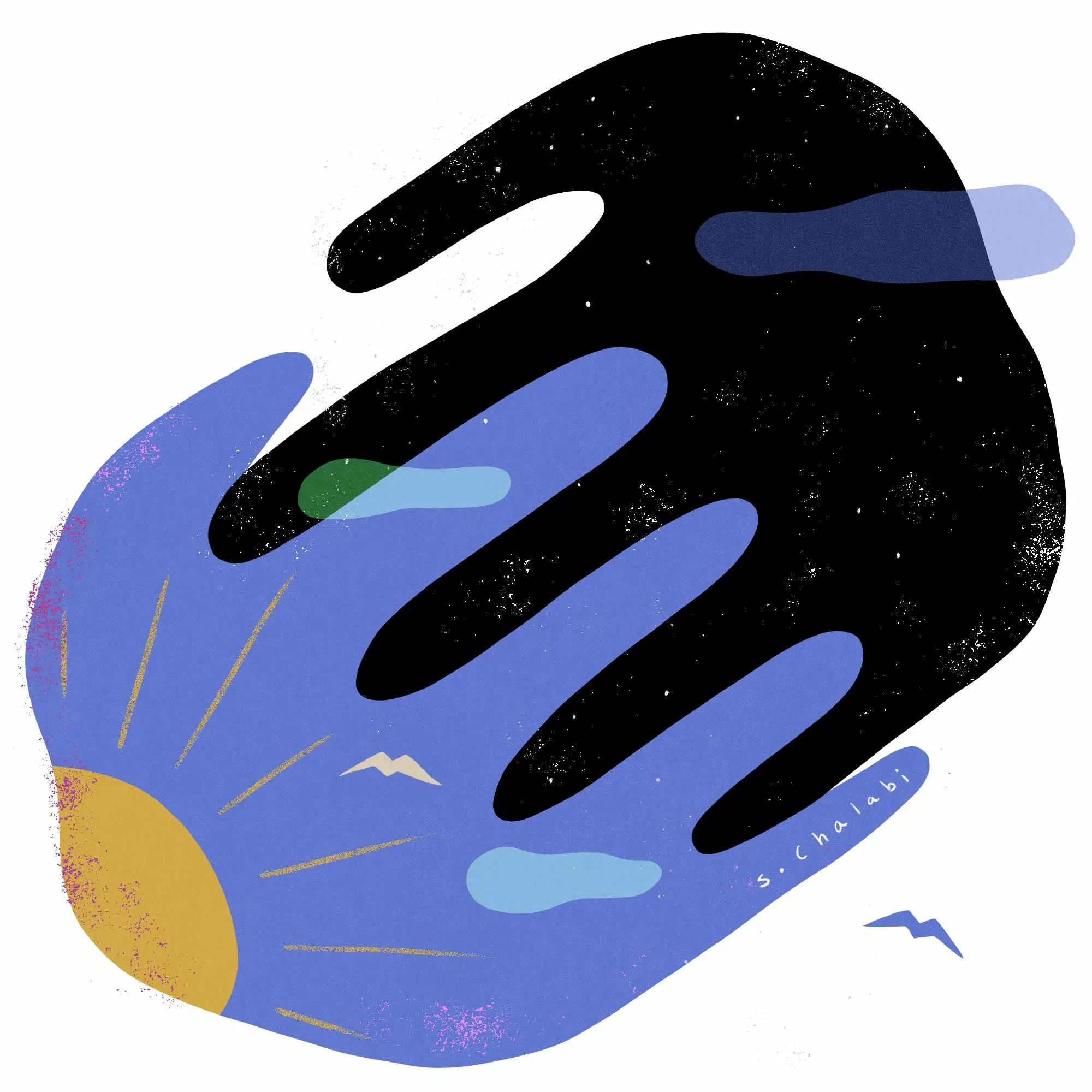Taylor Renee Aldridge on shared imagination
Taylor Renee Aldridge is the visual arts curator and program manager at the California African American Museum; along with art critic Jessica Lynne, she co-founded ARTS.BLACK, a journal of art criticism for Black perspectives, in 2015.
The abstractionist Allie McGhee gestures with paint stroke toward a new congregation. A series of straight lines, an ellipse that is the product of his repetitive circular gesture, a gust of wind and water reveal themselves through canvas. Shapes that resemble a banana, a moon, or perhaps a horn signify how one form can hold many meanings, many departures in a given narrative. In one of his paintings, a procession of black lines follow one another into a threshold of blue crystal waters. The disposition of the lined marks reminds me of grief. A steady inching toward a new and uncertain horizon is a fact of life.
McGhee’s studio is a large warehouse located on one of the busiest streets in Detroit, Michigan, Jefferson Avenue. From his window, there is a clear view of the Belle Isle Bridge and the Detroit River. Almost every day (“except Christmas”), Allie is in that studio, after his morning run on the Isle. There, he is gesturing, dreaming, and journeying through astrophysical landscapes, re-remembering dreams that recall visits from ancestors, and imagining a realm beyond our scope. In recent years, I’ve sat with Allie in his studio as he showed me the products of his prolific practice. There is a palpable joy that I find there in him, in his refuge of repetition. Now in his seventies, he has seen so much. And this year, this world we are in right now, this inevitable future of so many endings does not incite fear in him. In conversation, he defers to ancient history, to visits from ancestors, and to galaxies still not fully known to humans. Through the device of abstraction, he is empowered by all that we do not know.
McGhee’s work revels in what Torkwase Dyson has termed “Black Compositional Thought”: the utility of abstract shapes and forms to help motion toward an organizing, a blueprint, a liberation, a structuring and even an un-structuring. McGhee marks a fissure between the limits of reality—or rather what humans have been able to decipher in the Anthropocene—and the indefinability of all that has yet to be deciphered. In that fissure, so many unknowns bleed into the fore. He indexes through line, shape, texture, and color a possible geography informed by an otherwise data that will probably never be discovered by humans in this lifetime. There is a constant riffing happening in that artmaking, an improvised repetition, and each stroke is slightly differentiated from the mark that preceded it. This is Jazz. Like the initial gatherings of a twister, after many iterations of circular motion, a form is fabricated—formidable and fortified.
While watching a talk between scholars Ruha Benjamin and Dorothy Roberts in July, I was enamored by their remarks on the possibilities of imagination. “Imagination is a terrain of action,” they announced. Imagination is a duty of the global citizen. For me, Allie’s work helps me attend to a daily practice of this method of survival inventiveness. Through his abstraction, I am allowed to envision a possibility of abundance, a cartography without borders, and a constellation of lived experiences without bondage. As I perpetually attend to an ekphrasis of his work, it provides a training ground for how I might master the art of manifesting a new realm of living. I learn that this work of imagining is carried out through the daydreaming of the plurality of “I” and the cohesion of chorus. I work to encourage others to dream with me; imagination is best shared through mass movement and widespread fellowship.

This essay is part of CREATIVE FUTURES, a series of provocations by thinkers across the arts, documentary, and journalism on how to reimagine their sectors.